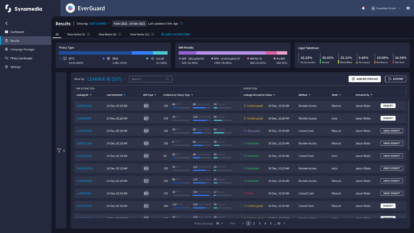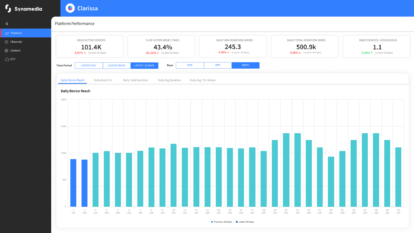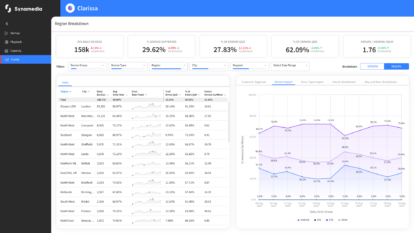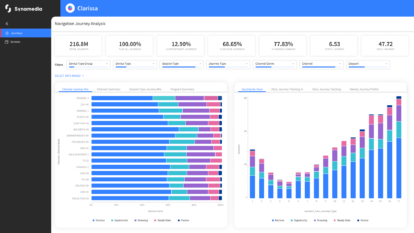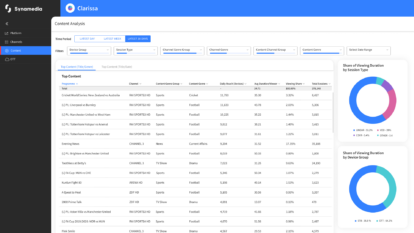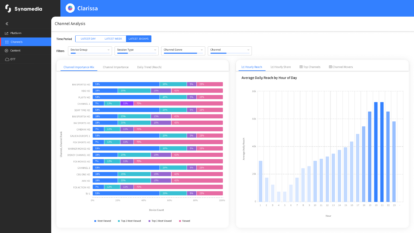We all know in our heart of hearts that satellite is a dated method of video distribution. While efficient, its mass approach of transmitting generic content that not all affiliates or virtual MVPDs might want, has a high-cost barrier, limits affiliate personalisation, and is expensive for anything other than mass delivery to thousands of receive endpoints. Its one-size –fits all approach limits the ability to offer targeted affiliate content and value-added services.
While the D2C video sector has embraced IP and is benefiting from CDN, ABR, DASH to name a few, with low latency and better user experiences, content distribution is not riding the IP technology wave and is missing out on benefits.
So, why is nearly all primary distribution to partners by satellite?
Stuck in a satellite rut
One answer is a cultural mindset, a fear of the unknown and the changing commercial model. It’s not possible to take a gradual step by step, phased approach. Moving to IP’s usage-based billing model requires a radical rethink and business shift. This is in stark contrast to distributing everything by satellite whether every customer wants it, or nobody does, with a well-understood commercial model.
The distribution market is shifting, and IP adoption is gaining traction, although slowly when it comes to at-scale delivery to thousands of affiliates. In quite whispers you may still hear a few people claiming that IP reliability is still a factor as well as concerns over last mile connectivity.
This is old news; the internet’s infrastructure is now proven to deliver robust services at scale to support video distribution and new technologies continue to add benefits with increased last mile connectivity and lower latency. IP brings multiple connectivity options across multiple physical networks unlike satellite, which is a single delivery network. But a new worry is now ringing alarm bells: as satellite spectrum disappears it brings a new sense of urgency to moving to IP.
Technology will set you free
Fortunately, new tech innovations will make these long-standing obstacles history. This is primarily due to the emergence of HTTP 3.0 and QUIC, for sub-second connectivity and overcoming bandwidth issues, alongside proven technologies including SRT, and CDN networks. Concerns about last mile IP connectivity have also dissipated with the emergence of various options including 5G fixed wireless access and even low earth orbit (LEO) satellite networks.
The effect will be that IP distribution will become a far more compelling proposition that is far cheaper than satellite, introducing personalisation, low latency, and offering a better experience using central and edge ad-insertion technologies that no longer requires shoehorning a new technology stack into satellite architecture.
One size doesn’t fit all
Content today is typically distributed as single resolution linear video channels in an MPEG-2 transport stream wrapper, providing an interoperable format for satellite and IP networks. Regional channels variants are created using edge switching across multiple unique feeds based on content rights and techniques such as geographic blackout.
With IP delivery, content distributors have access to a whole new world of features, including centralised creation of regional variations with targeted distribution. While this simplifies the workflow, operators often need clear demarcation and multiple hand off formats. An alternative approach is to adopt a native ABR distribution model, switching away from MPEG-2 transport streams to formats such as DASH CMAF, which enable greater choice and distribution over CDN networks.
The current satellite distribution model is ineffective when it comes to regionalisation. For sports leagues distributing to various states or countries, or content owners distributing to many broadcasters, distribution needs to be regionalised matching end consumer needs. But putting all the variants on satellite requires these customers to switch between a national and regional feed. This push approach is inefficient and expensive.
With IP’s pull model and new technologies, it is now possible to seamlessly switch between a national and regional feed while reducing delivery costs and maintaining a consistent and transparent handoff to affiliates and services providers with native ABR, TS or decoded output over SDI and IP.
Switching to IP distribution provides more choice without increased delivery costs, content owners can generate regional variations centrally or at the edge. Delivering each affiliate a personalised video channel or sending the same video channel will consume the same delivery bandwidth and hence costs. Regional variations become super simple with edge processing adapting national video channels to create regional variations using ad-insertion techniques for content and ad replacement.
Another IP distribution breakthrough is the ease in delivering new channels in just minutes. Using Quortex Link or Quortex PowerVu it is easy to set up new distribution channels in minutes for an incredible time to market.
Are the cost benefits impressive?
Let’s look at one regional sports network in the US. It used one transponder for national distribution and two for regional distribution. It only used the two regional transponders for two hours a day but had to pay for 24 hours a day. By moving to IP distribution, the cost is now dependent on the number of partners pulling the content, resulting in a saving of more than one million dollars a year.
On top of that, moving to IP opens new monetisation opportunities with the introduction of regional ad insertion. As channels are delivered across different states, regions, and countries, formats and ads need to change to meet local needs. Using Quortex Link, in just a few clicks, a content owner can take a single video channel and create geographic variants with different resolutions and frame rates to meet the end-market requirements. It can manage ad-insertion centrally or at the region level at affiliate handoff with our Media Edge Gateway (MEG) inserting ads locally using regional ad-decision servers for ad placement and reporting.
If we have whetted your appetite to find out more, then come and see how you can use our Quortex Link and Quortex PowerVu for IP distribution with pristine picture quality at IBC 2024.
About the Author
Helping video entertainment businesses connect audiences with the right content. Kenelm’s focus is on B2B Distribution with Synamedia innovative solutions: Quortex Link, Powervu, QuortexPowervu and Media Edge Gateways.

